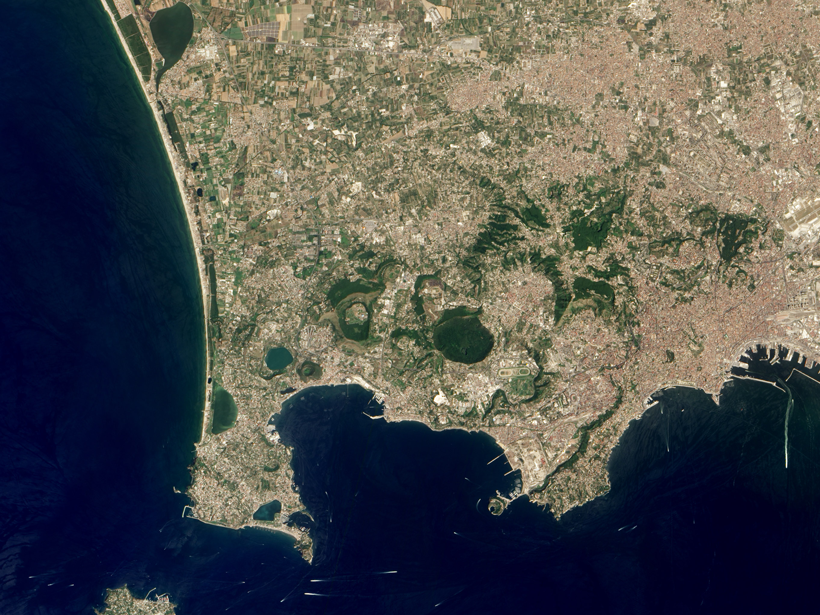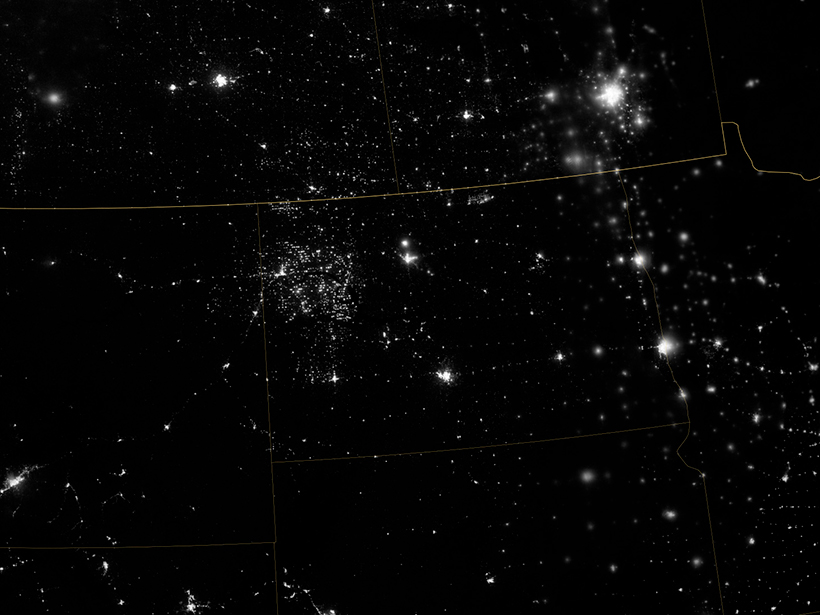A new surface velocity map shows strain localized along major strike-slip features, suggesting the central Tibetan Plateau is not deforming as a fluid in response to gravitational collapse.
Journal of Geophysical Research: Solid Earth
Harnessing Remote Infrasound to Study Volcanic Eruptions
Data from the 2015 eruption of Chile’s Calbuco volcano suggest the international network built to monitor nuclear explosions may also be used to detect and characterize volcanic activity.
How Fast Is the Nile Delta Sinking?
New study calculates the delta’s subsidence on the basis of satellite data.
Acoustic Monitoring of Inelastic Compaction in Porous Limestone
During triaxial compression experiments, acoustic monitoring reveals compaction localization in a high porosity limestone, accompanied by a significant decrease in P-wave velocity.
Visualizing One of the Most Hazardous Formations in Nature
A network of buoys provides a first glimpse of the seafloor beneath a volatile Italian caldera.
What Happens Inside Rocks as They Fail?
An innovative technique provides micro-scale resolution on the three-dimensional evolution of damage within crystalline rocks that leads to fault nucleation.
New Model Simulates Faults and Folds Shaping Each Other
A new model simulates how faulting and folding deep in Earth’s crust shape the way rocks fold and cause earthquakes.
Widespread Mantle Upwelling Beneath Oceanic Transform Faults
A global characterization of mantle flow patterns beneath active oceanic transforms suggests pervasive upwelling stabilizes divergent plate boundaries by warming and weakening these enigmatic features.
A Novel Way to Track Magma Flow
Sparse seismic data can accurately predict volcanic eruptions.
More Earthquakes May Be the Result of Fracking Than We Thought
Scientists show small earthquakes caused by fracking near Guy-Greenbrier, Ark., in 2010 that could have been early indicators of high stress levels on larger faults deeper underground.










